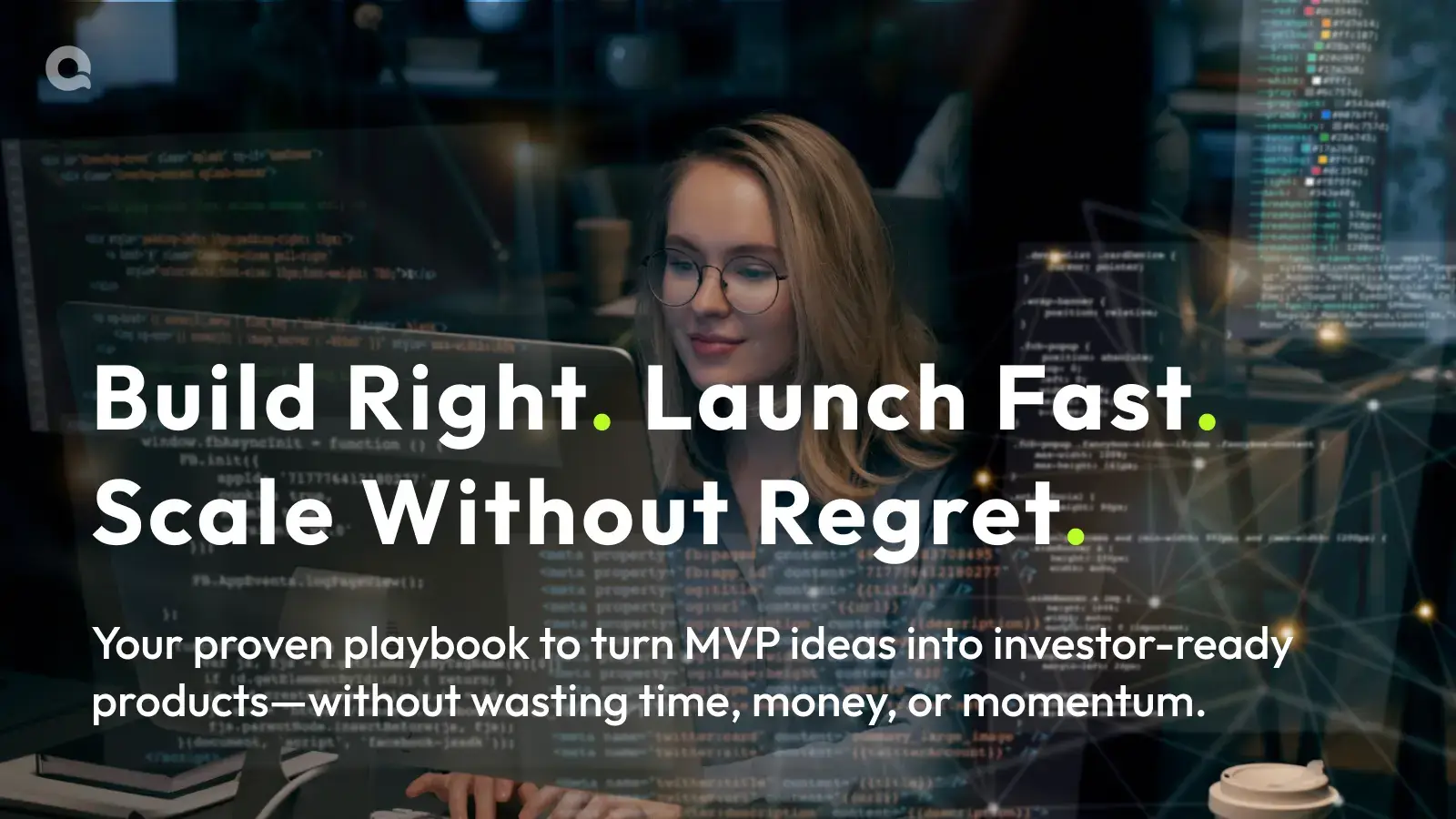
Every startup dreams of launching fast, but speed without strategy is a recipe for chaos. Founders often dive headfirst into MVP development, thinking launch equals success. But here’s the truth: an MVP is not the destination — it’s your entry ticket to the real game.
The difference between startups that grow and those that fade? A practical game plan that turns an MVP into a market-ready product.
In this guide, you’ll learn:
- Why modern MVPs succeed (and why most don’t)
- A simple framework to move from idea to scale
- Lessons from real startups, including Hellory
- Tech, team, and tools that scale smart
Whether you’re validating a scrappy prototype or gearing up for product-market fit, this playbook gives you the clarity and tools to scale with confidence. For deeper insights, check out our related reads like Custom Software Development for Startups and Build Smart, Not Big: 3 Outsourcing Models Startups Should Know.
What Is an MVP Really?
The MVP isn’t just a simpler version of a full product — it’s an intentional experiment. Rather than aiming for perfection, startups use MVPs to test assumptions and gather meaningful feedback from real users as early as possible.
A truly modern MVP strategy revolves around:
- Validating your idea quickly and cost-effectively
- Engaging users early for actionable feedback
- Building iteratively with future scalability in mind
As Yevgeniy Brikman explains, an MVP isn’t a final product—it’s a continuous process of testing, learning, and evolving.
The MVP to Product Framework
Follow this 4-stage roadmap:
1. Build → 2. Validate → 3. Improve → 4. Scale

| Feature | MVP | Full Product |
|---|---|---|
| Purpose | Validate a core hypothesis | Deliver value at scale |
| UX & Design | Functional, basic UI | Polished, optimized UX |
| Users | Early adopters | Mainstream market |
| Tech Stack | Fast-to-launch tools | Scalable architecture (e.g., microservices) |
| Dev Team | Small + often outsourced (QalbIT MVP Services) | Larger, in-house + dedicated support |
| Revenue Focus | Feedback loops | Monetization and CAC:LTV focus |
For more clarity on this, see Product School’s breakdown of the difference between a prototype and an MVP.
Case Study: Hellory — From MVP to Scalable SaaS
When Hellory set out to build a lightweight WhatsApp reminder app, QalbIT helped refine the idea and brought it to life quickly with Node.js and Flutter.
Once validated, we scaled:
- Added reminder templates, cloud backend
- Integrated payments (Razorpay)
- Built modular APIs for growth
Read how QalbIT helps clients like Hellory through QalbIT MVP Services and Build Smart, Not Big.
5 Common Startup MVP Mistakes
- Overbuilding – More features ≠ better MVP
- Ignoring feedback – No user feedback = no validation
- Choosing the wrong tech stack – Evaluate future scalability
- Skipping backend planning – MVPs need future-proof foundations
- No scale plan – MVP is not the final version

Want to avoid these pitfalls? Here’s a complete list of MVP mistakes to avoid from Upsilon that every founder should read.
Tech Stack & Team: Scaling Smart
When should you move from no-code or low-code to custom code?
- Use fast tools early: Firebase, Flutter, Laravel
- Scale with robust stacks: Node.js, PostgreSQL, Docker
Scaling requires both strategy and timing. If you’re preparing to grow, this guide from First Round offers real lessons from Figma’s CPO on how to scale product teams effectively.
Need expert Laravel developers to upgrade your MVP? Check our Hire Laravel Developer page.
Also explore our guide on Custom Software Development for Startups.
From MVP to Product-Market Fit
How do you know you’ve hit PMF?
- Retention & usage metrics spike
- Organic signups
- Paying customers
- Feature requests surge
According to Forbes, PMF is the inflection point where scaling becomes viable—and expected.
Investor-ready startups are the ones that prove demand with an MVP, then scale methodically.
Why QalbIT Is the Ideal MVP Partner
We’re more than devs — we’re product thinkers.
- ✅ 11+ years building startup solutions
- ⚙️ Scalable MVP-to-product systems
- 🛠️ Laravel, Node, Flutter, AWS pros
- 💼 Trusted by clients in the US, UK, Dubai
Learn more about our QalbIT MVP Services or Book a Free Consultation now.
Conclusion
Building an MVP is only the beginning. To truly thrive, startups must think beyond launch and plan for scalability from day one. Whether you’re a solo founder testing the waters or a funded startup preparing for growth, following a structured MVP-to-product journey ensures you’re building something that lasts.
For a deeper dive into best practices, check out SpdLoad’s step-by-step guide to scaling from MVP to full product.
At QalbIT, we specialize in helping startups move fast without breaking things — designing MVPs that are lean today but ready to scale tomorrow.
🚀 Ready to take your MVP from scrappy to scalable?
Book a Free MVP-to-Product Consultation with QalbIT and let’s plan your product’s next big leap.
Frequently asked questions
An MVP is a basic version of your product used to test an idea with real users.
It usually takes 4–12 weeks depending on features and complexity.
You analyze feedback and usage data, improve your product, and move toward product-market fit.
Yes. Many successful startups scale their MVPs into full products after validation.
Look for traction signals like high retention, user referrals, and willingness to pay.
Popular stacks include Node.js, Laravel, PostgreSQL, Flutter, and Firebase.
Depending on scope and location, it can range from $5,000 to $50,000 or more.
MVP is a test version. V1 is a more complete product ready for wider release.
Yes, if you need to validate quickly. But plan to switch to custom code if scaling.






